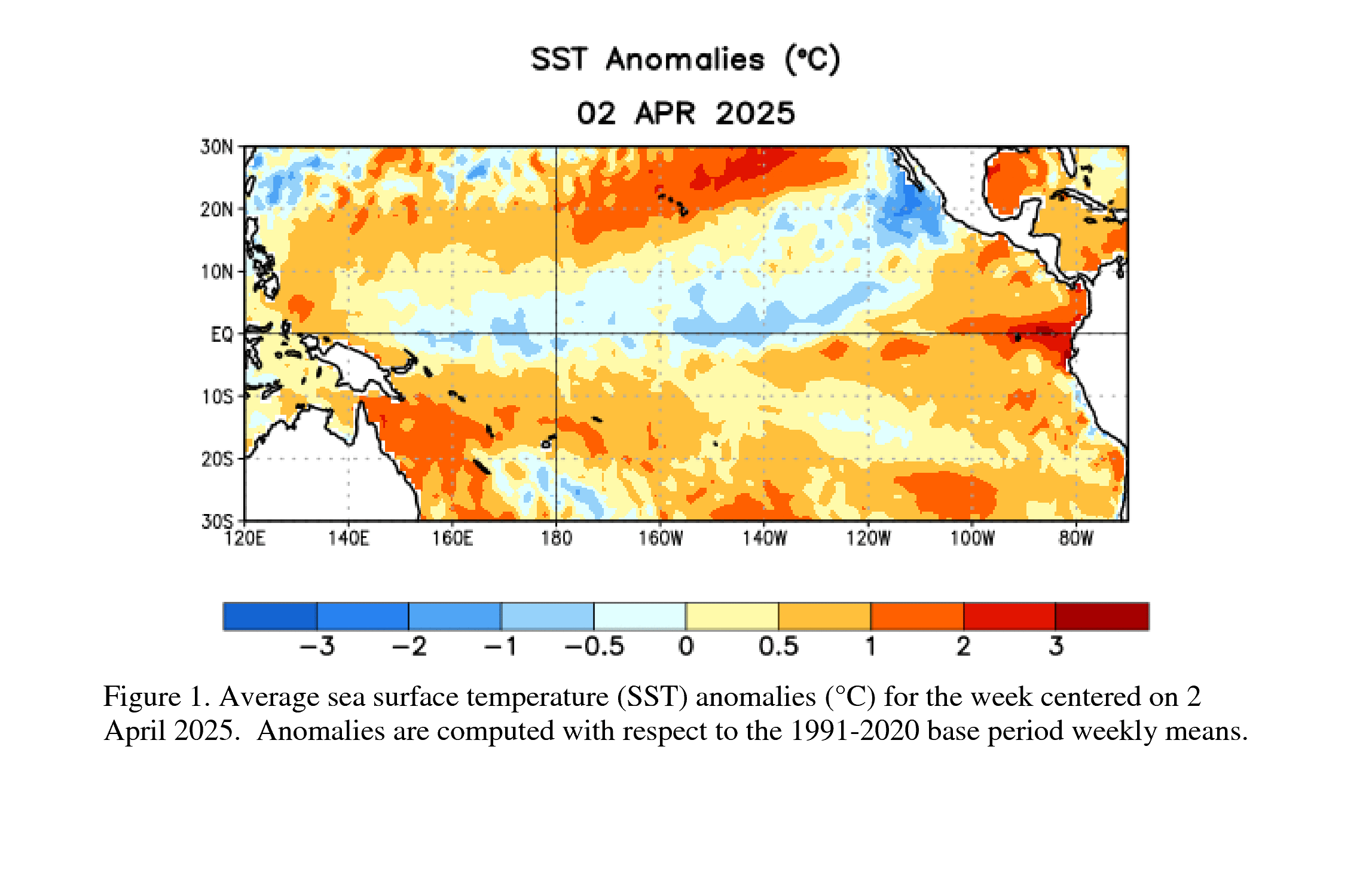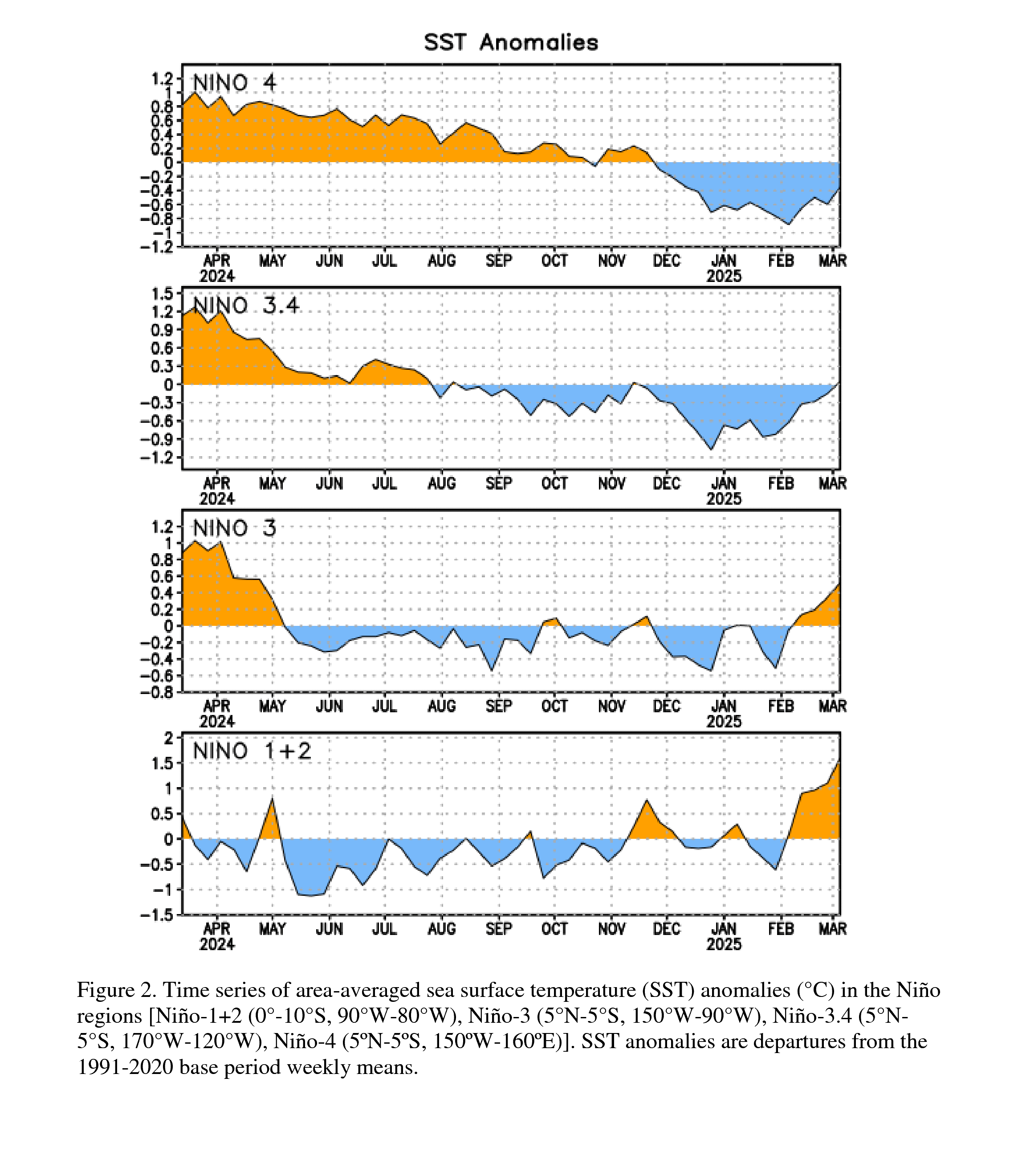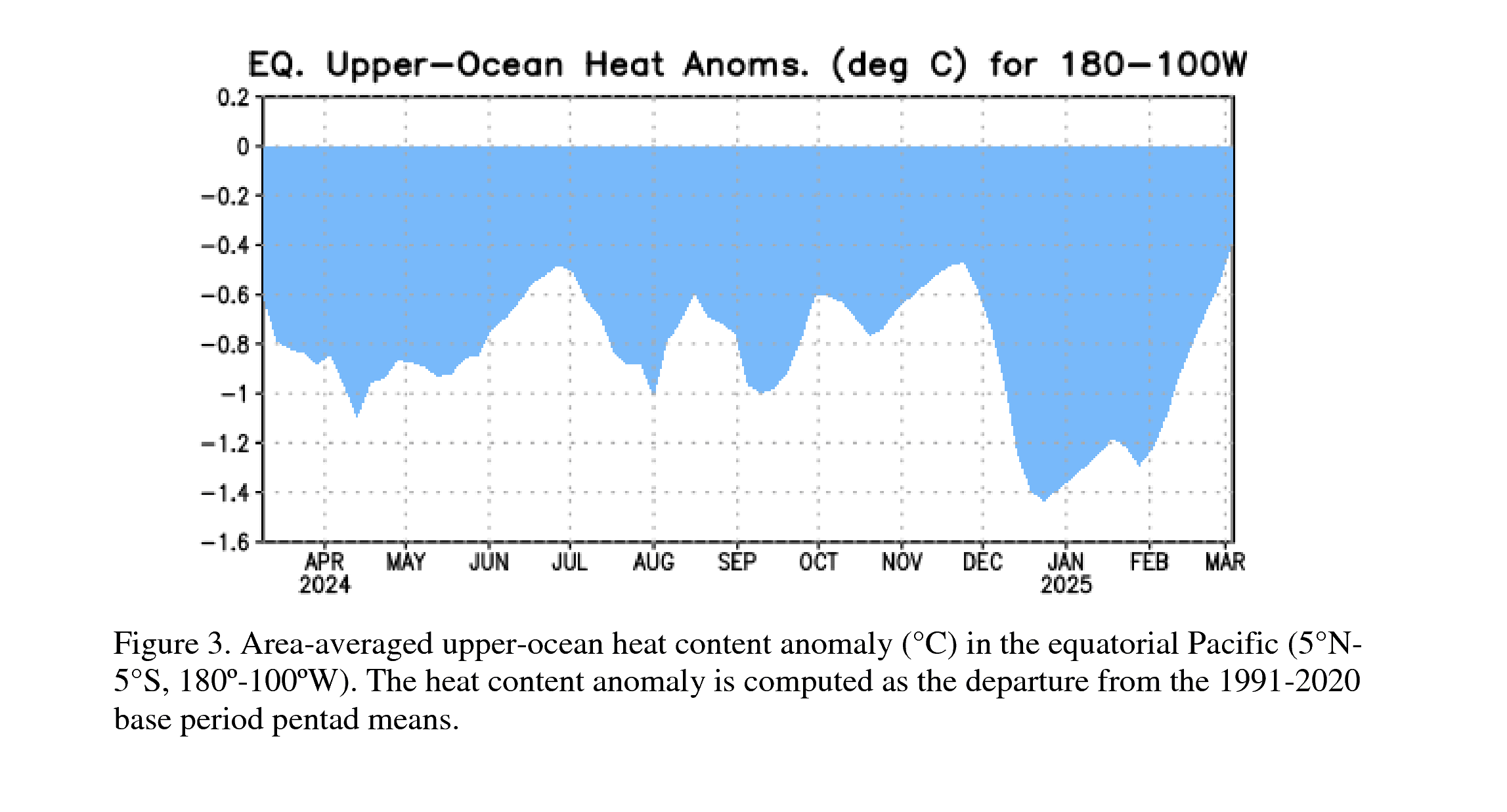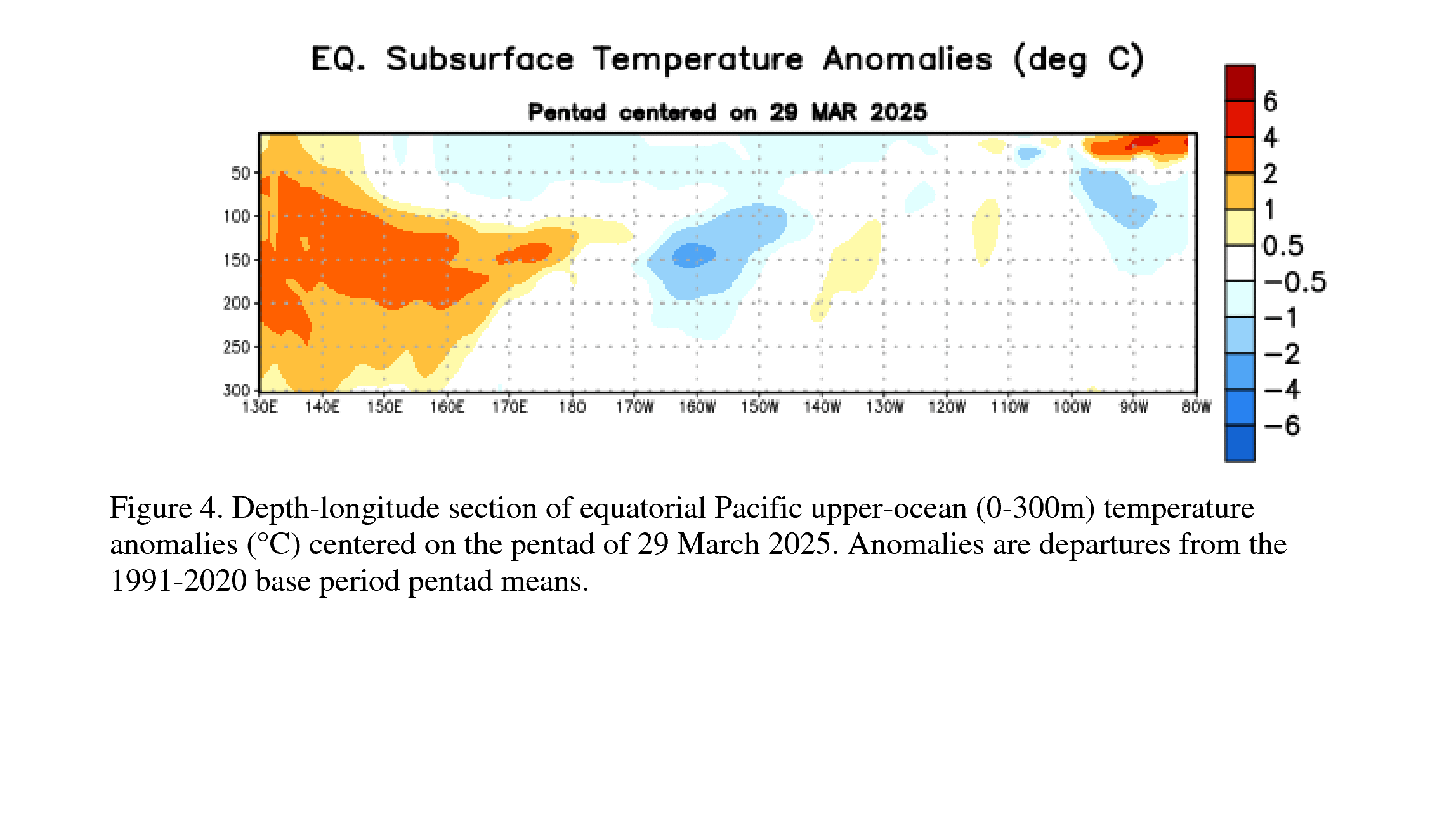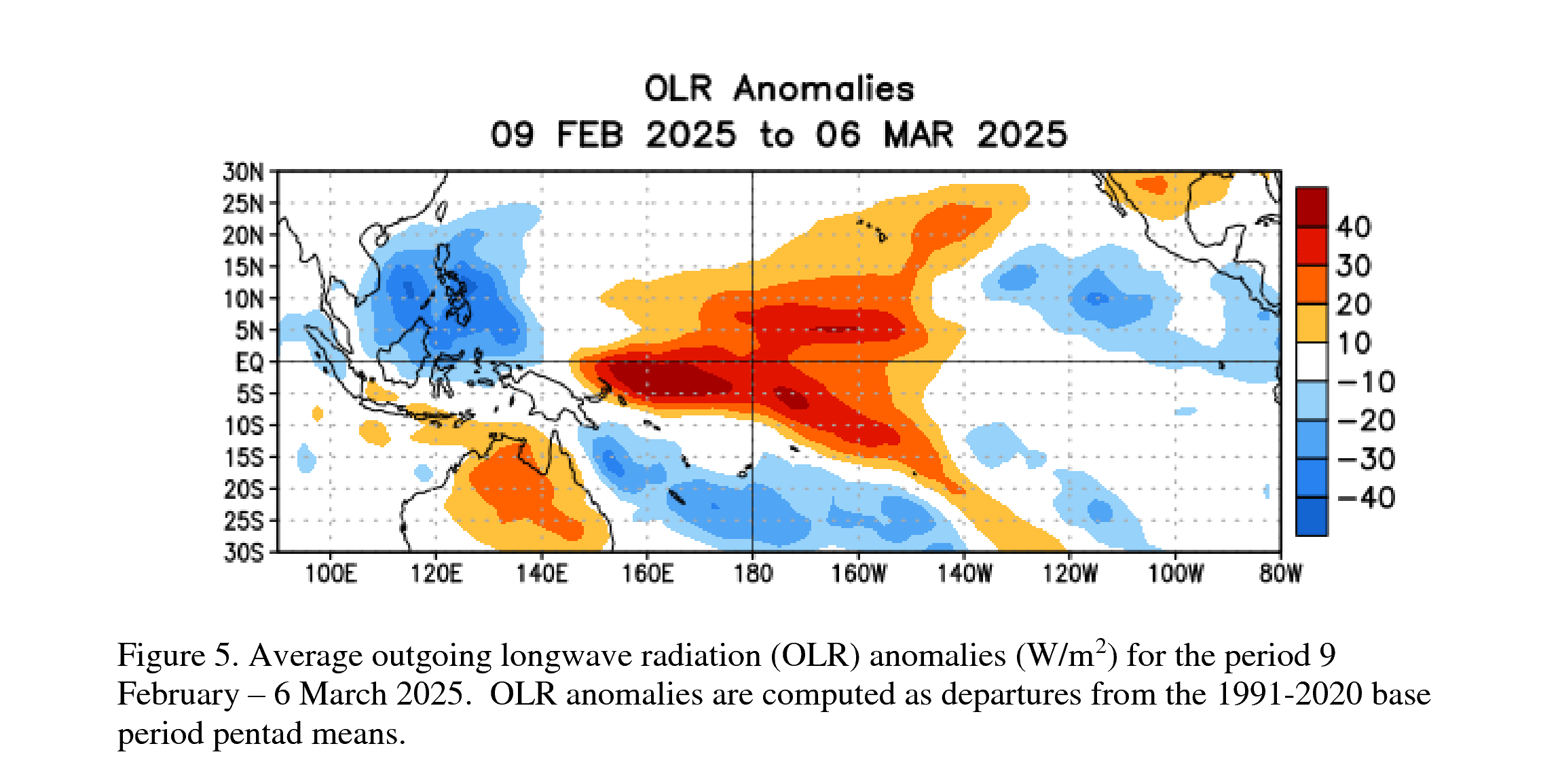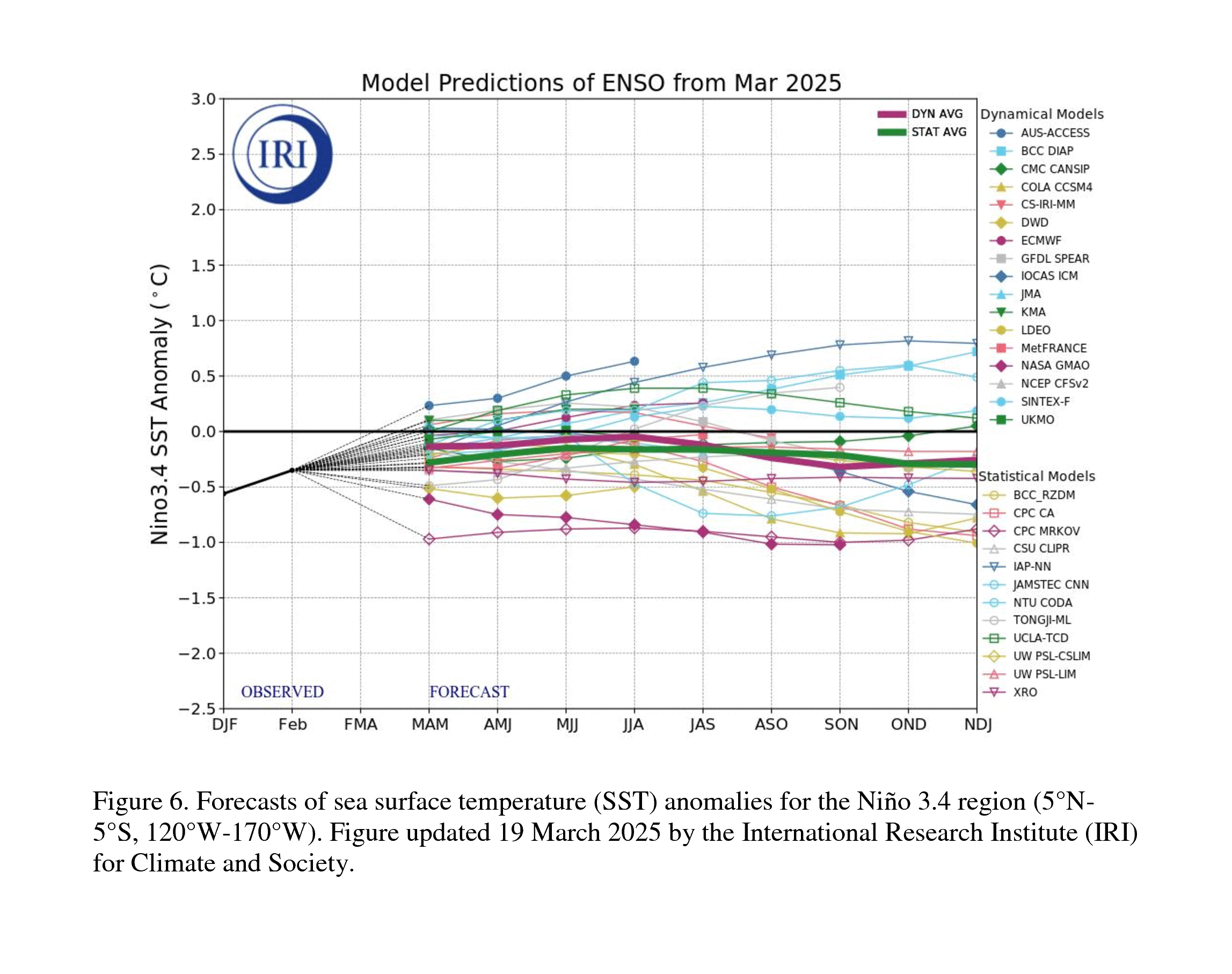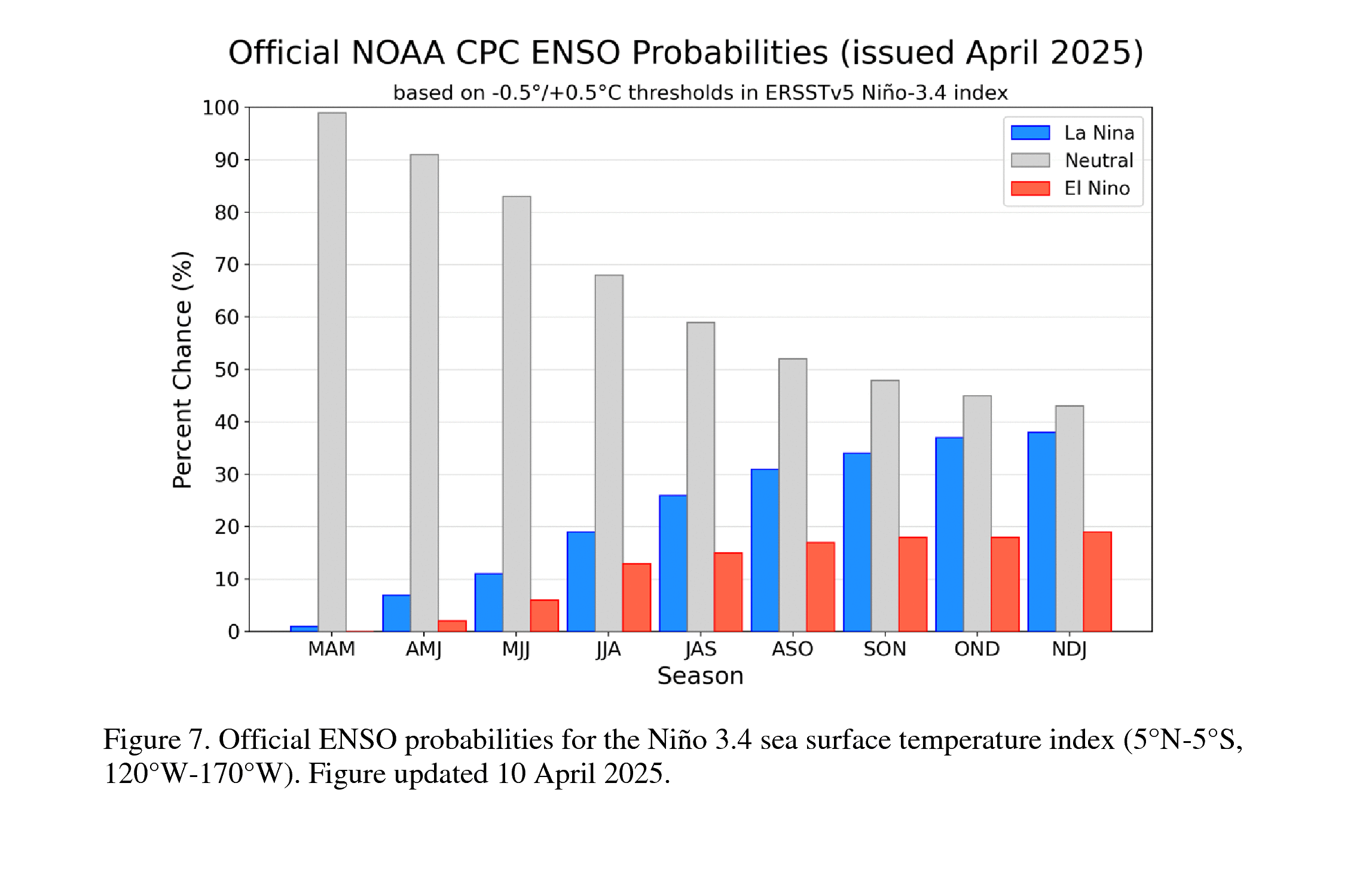IRI ENSO Forecast
IRI Technical ENSO Update
Published: Aug 18 19, 2023
Note: The SST anomalies cited below refer to the OISSTv2 SST data set, and not ERSSTv5. OISSTv2 is often used for real-time analysis and model initialization, while ERSSTv5 is used for retrospective official ENSO diagnosis because it is more homogeneous over time, allowing for more accurate comparisons among ENSO events that are years apart. These two products may differ, particularly during ENSO events. The difference between the two datasets may be as much as 0.5 °C. Additionally in some years, the ERSSTv5 may tend to be cooler than OISSTv2 in the context of warming trends, because ERSSTv5 is expressed relative to a base period that is updated every 5 years, while the base period of OISSTv2 is updated every 10 years. In February 2021, both datasets were updated to reflect the 1991-2020 climatology period.
Recent and Current Conditions
The SST anomaly for NINO3.4 during the May-Jul 2023 season was +0.81 °C, and for the month of Jul 2023 it was +1.07 °C. The most recent weekly (09 Aug 2023) anomaly in the NINO3.4 region was +1.2 °C, suggesting that the tropical Pacific is experiencing a moderate strength El Niño conditions. The IRI’s definition of El Niño, like NOAA/Climate Prediction Center’s, requires that the monthly SST anomaly in the NINO3.4 region (5S-5N; 170W-120W) exceed 0.5 °C. Similarly, for La Niña, the anomaly must be -0.5 °C or colder.
The key oceanic variables are currently indicative of El Niño conditions, while atmospheric variables do not yet exhibit full coupling to the warm SST anomalies over the central-eastern equatorial Pacific. For example, the traditional and equatorial Southern Oscillation Indices, are now both in the El Niño range (as of 14 Aug 2023, the last observed value of the traditional Southern Oscillation Index was -12.9), the low-level easterly winds are weaker than normal near the International Date Line, while near normal over the eastern tropical Pacific Ocean. Upper-level winds are westerly over the eastern tropical Pacific. Above-normal cloudiness have been observed over the central and western Pacific Ocean, while below-normal convection is seen over Indonesia. In the equatorial Pacific Ocean, subsurface temperatures are currently warmer than average. Particularly, the equatorial eastern Pacific shows anomalously warm subsurface temperatures, leading to the substantially warmer SSTs there (as of 09 Aug 2023, the last observed value of in the far eastern Pacific NINO1+2 region is +3.3).
Expected Conditions
Note – Only models that produce a new ENSO prediction every month are considered in this statement.
What is the outlook for the ENSO status going forward?
The El Niño/Southern Oscillation (ENSO) Diagnostic Discussion released on 10 Aug 2023 by the Climate Prediction Center/NCEP/NWS issued an El Niño advisory.
The latest set of ENSO prediction models from mid-Aug 2023 is now available in the IRI ENSO prediction plume. These are used to assess the probabilities of the three ENSO categories by using the average value of the NINO3.4 SST anomaly predictions from all models in the plume, equally weighted. A standard Gaussian error is imposed over that averaged forecast, with its width determined by an estimate of overall expected model skill for the season of the year and the lead time. Higher skill results in a relatively narrower error distribution, while low skill results in an error distribution with width approaching that of the historical observed distribution.
Based on the IRI ENSO plume, the forecasts indicate a high likelihood of El Niño conditions persisting during the rest of the calendar year and first quarter of 2024. Specifically, during boreal autumn and winter the probabilities of El Niño range from 99% to 87% (Aug-Oct: 99%, Sep-Nov: 99%, Oct-Dec: 98%, Nov-Jan: 97%, Dec-Feb: 94%, and Jan-Mar 2024: 87%). Thereafter, there is a gradual decrease in the probability of El Niño during the boreal spring (Feb-Apr: 76%, and Mar-May: 54%, and Apr-Jun: 37%). The second most probable category throughout the forecast period is ENSO-neutral, but with probabilities gradually increasing from 6% in Dec-Feb, 2024, to 24% in Jan-Mar, 45% in Mar-May, and 59% in Apr-Jun 2024. The probability of redevelopment of La Niña is almost zero during the forecast period (4% in Apr-Jun 2024). A plot of the probabilities summarizes the forecast evolution.The climatological probabilities for La Niña, ENSO-neutral, and El Niño conditions vary seasonally, and are shown by the lines on the plot, and are given in a table at the bottom of this page for each 3-month season.
Caution is advised in interpreting the forecast distribution from the Gaussian standard error as the actual probabilities, due to differing biases and performance of the different models. In particular, this approach considers only the mean of the predictions, and not the total range across the models, nor the ensemble range within individual models. At longer leads, the skill of the models degrades, and uncertainty in skill must be convolved with the uncertainties from initial conditions and differing model physics, which leads to more climatological probabilities in the long-lead ENSO Outlook than might be suggested by the suite of models. Furthermore, the expected skill of one model versus another has not been established using uniform validation procedures, which may cause a difference in the true probability distribution.
In summary, the forecast for the boreal autumn and winter shows a high probability (above 90%) of El Niño conditions, while the chance of ENSO-neutral conditions during the same period are mostly less than 10% (6% in Dec-Feb 2024). The continuation of El Niño conditions is forecasted to be highly likely during the rest of 2023, and first quarter of 2024, with the chances of a return to ENSO-neutral conditions increasing to about 59% by the end of the forecast period in Apr-Jun 2024. The chances of La Niña redevelopment are almost zero.
A caution regarding the model-based ENSO plume predictions released mid-month, is that factors such as known specific model biases and recent changes in the tropical Pacific that the models may have missed, are not considered. This approach is purely objective. Those issues are taken into account in the official outlooks, which are generated and issued early in the month by CPC, and which will include some human judgment in combination with the model guidance.

| Season |
La Niña |
Neutral |
El Niño |
| ASO |
0 |
1 |
99 |
| SON |
0 |
1 |
99 |
| OND |
0 |
2 |
98 |
| NDJ |
0 |
3 |
97 |
| DJF |
0 |
6 |
94 |
| JFM |
0 |
13 |
87 |
| FMA |
0 |
24 |
76 |
| MAM |
1 |
45 |
54 |
| AMJ |
4 |
59 |
37 |




